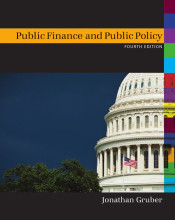Savings
15 important questions on Savings
What are the reasons to save?
2. saving to smooth seasonal consumption needs
3. also: build up assets to use as collateral, self insure against major shocks
What is low frequency saving?
What is high frequency saving?
- Higher grades + faster learning
- Never study anything twice
- 100% sure, 100% understanding
Why is low frequeny saving questionnable in both poor and rich countries
Poor: all family members combined and retirement periods shorter, there is intergenerational household instead of neclear household.
Formulate the savings constraint
What does behavorial economics say about credit constraints in practice:
RISK: persisistent negative shocks can keep wiping out assets
social arrangements: family/neighbours ''tax'' your surplus
What is the neoclassical theory of savings
Key property: households will tend to smooth consumption. Consumption will not be tied to current income!
Describe the life-cycle hypothesis by ando-modigliani. and where is it worst applicable?
Model’s predictive success much worse in lower-income countries • Multigenerational households see very different income streams
Describe the permanent income hypothesis by milton friedman
Friedman: • Enjoy permanent increases, increasing your expenditures accordingly • Save transitory increases, expecting downturns later
If you could make choices without constraints/if markets work perfectly, your consumption choices should be fully independent of when your income arrives
Give the 2 constraints that poor households suffer
› Saving constraints • Households with transitorily high incomes are forced to consume more than they like • Cannot SAVE as savings devices are often unreliable, inconvenient, inflexible, and inappropriately structured
What are explanations for low savings rates
High risk -> persistent negative shocks make asset accumulation imposs.
Social Hes -> neighbours/family claim your surpluses
Hyperbolic discounting -> people want reward sooner than later
What is hyperbolic discounting?
What is exponential discounting
Why does hyperbolic discounting give rise to preference reversals?
What is saliency and how to make products more salient?
Savings products that make future needs more salient are needed
• Reminders
• Framing
The question on the page originate from the summary of the following study material:
- A unique study and practice tool
- Never study anything twice again
- Get the grades you hope for
- 100% sure, 100% understanding






























